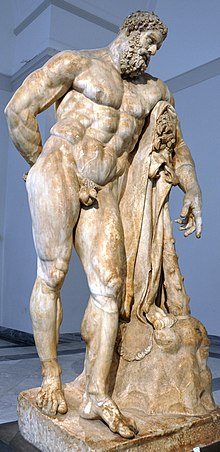
CHEAP TRAVEL EUROPE
CARACALLA THERME
Baths of Caracalla
The Baths of Caracalla (Italian: Terme di Caracalla) in Rome, Italy were Roman public baths, or thermae, built in Rome between AD 212 and 216, during the reign of the Emperor Caracalla.
Contents[hide] |
[edit] History
The baths remained in use until the 6th century when the complex was sacked by the Ostrogoths during the Gothic War, destroying the hydraulic installations.[1]
In the early 20th century, the design of the baths was used as the inspiration for several modern structures, including Pennsylvania Station in New York City.
At the 1960 Summer Olympics, the venue hosted the gymnastics events.
The baths were the only archaeological site in Rome damaged by an earthquake near L'Aquila in 2009.[2]
[edit] Visiting
The extensive ruins of the baths have become a popular tourist attraction. The baths are open to the public for an admission fee of 6 Euros, which does not apply to students or pensioners from the EU.
Opening hours are 9:00 - 19:00 on all days except Monday. (On Monday the site closes at 14:00.)
Access is limited to certain areas to avoid damage to the mosaic floors, although such damage is already clearly visible. Also, a total of 22 well-preserved columns from the ruins are found in the church of Santa Maria in Trastevere, taken there in the 12th century.
[edit] Grounds
The bath complex covered approximately 25 hectares (33 ac). The bath building was 228 meters (750 ft) long, 116 meters (380 ft) wide and 38.5 meters (125 ft) estimated height, and could hold an estimated 1,600 bathers.[3]
[edit] Interior
The Caracalla bath complex of buildings was more a leisure centre than just a series of baths. The "baths" were the second to have a public library within the complex. Like other public libraries in Rome, there were two separate and equal sized rooms or buildings; one for Greek language texts and one for Latin language texts.
The baths consisted of a central 55.7 by 24 meter (183x79 ft) frigidarium (cold room) under three 32.9 meter (108 ft) high groin vaults, a double pool tepidarium (medium), and a 35 meter (115 ft) diameter caldarium (hot room), as well as two palaestras (gyms where wrestling and boxing was practiced). The north end of the bath building contained a natatio or swimming pool. The natatio was roofless with bronze mirrors mounted overhead to direct sunlight into the pool area. The entire bath building was on a 6 meter (20 ft) high raised platform to allow for storage and furnaces under the building.[3]
The libraries were located in exedrae on the east and west sides of the bath complex. The entire north wall of the complex was devoted to shops. The reservoirs on the south wall of the complex were fed with water from the Marcian Aqueduct.[3]
[edit] Dimensions
Principal dimensions
Precinct maximum: 412x393 m
Internal: 323x323 m
Central Block overall: 218x112 m
Swimming Pool: 54x23 m
Frigidarium: 59x24 m, height c. 41 m
Caldarium: 35M diameter height c. 44 m
Internal courts: 67x29 m

Quantities of materials
Pozzolanna: 341,000 m³
Quick lime: 35,000 m³
Tuff: 341,000 m³
Basalt for foundations: 150,000 m³
Brick pieces for facing: 17.5 million
Large Bricks: 520,000
Marble columns in Central block: 252
Marble for columns and decorations: 6,300 m³
Estimated average labour figures on site
Excavation: 5,200 men
Substructure: 9,500 men
Central Block: 4,500 men
Decoration: 1,800 men
One of many statues is the colossal 4 m statue of Asclepius. The 12 m columns of the frigidarium were made of granite and they weighed close to 100 tons. Chris Scarre provides a slightly longer construction period 211-217 AD.[4]
They would have had to install over 2,000 tons of material every day for 6 years in order to complete it in this time period. Records show that the idea for the baths were drawn up by Septimius Severus, and merely completed or opened in the lifetime of Caracalla.[5] This would allow for a longer construction time frame.
The building was heated by a hypocaust, a system of burning coal and wood underneath the ground to heat water provided by a dedicated aqueduct. It was in use up to the 19th century.


